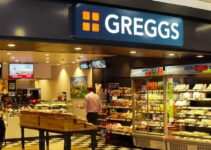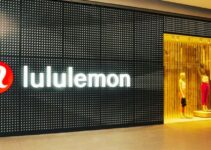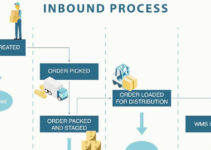Zara is the world’s leading Spanish retail fashion brand. Amancio Ortega and Rosalia Mera founded the fashion brand in 1975. Today, we’ll discuss the value chain analysis of Zara; and the primary and supporting activities involved in the process of value chain analysis Example Company. They’re inbound and outbound logistics, operations, marketing, and services; infrastructure, HRM, technological development, and procurement of the fashion brand as an application of value chain analysis process.
Substitutes of Zara
- Mango
- Chanel
- Christian Dior
- Ralph Lauren
- Prada
- Gucci
- Louis Vuitton
- Hugo Boss
- Versace
- Valentino SpA
- H&M
- Forever
- Marks and Spencer
- Burberry
The value chain analysis of Zara would analyze the primary and supporting activities in the process of value chain analysis application. They’re inbound and outbound logistics, operations, marketing, and services; infrastructure, HRM, technology, and procurement. Here’s Zara value chain analysis company example as follows;
Value Chain Analysis of Zara
Let’s discuss the primary and supporting activities involved in the process of value chain analysis of Zara. It is an application of value chain analysis based on Porter’s model; some of the key elements and components of value chain analysis are as follows;
Primary Activities of Zara Value Chain Analysis
Let’s discuss the five main elements of primary activities in the value chain analysis of Zara as follows;
Inbound Logistics
I-Vertical Integration
Zara follows the vertical integration strategy and it contributes significantly to the company’s growth and success. The fashion brand has almost complete ownership of its supply chain network and processes ranging from raw material sourcing to finished goods. It allows the company to manufacture approximately 60% of the goods in-house.
II-Ethical Sourcing
Zara cares about the sustainability of the environment, society, and people. The goal of fashion is to launch affordable fashion products and items for customers that would have a limited impact on the environment. Some of the key steps that the company has taken to make sure ethical sourcing and environmental sustainability are as follows;
- Making sure stakeholders involved in the SC network and processes are following ethical standards
- Decreasing the impact of dangerous and harmful chemicals
- Utilizing natural and organic fiber
Outbound Logistics
I-Distribution & Stocking
Zara mainly performs distribution at the beginning of the season like fall, summer, spring, and winter. It means that the stores would sell only seasonal clothing during the season, and occasionally you would find out-of-season items at discounted prices. The store managers should order the right quantity of stock for the season. They rely on the statistical data and records to make the right and precise decision.
II-Fast Distribution
Fast and speedy distribution plays a role in Zara’s outbound logistics strategy. For instance, the company delivers finished items to the chain stores in Spain within a day; abroad delivery is within 40 hours. The objective is to deliver the latest fashionable products to the customers as soon as possible.
Operations
I-JIT Production
In-house production and manufacturing of fashion apparel contribute significantly to the growth and success of the company. Zara keeps 85% of the reserve of capacity to make adjustments during the season. According to an estimate, the fashion brand manufactures 50-60% of the clothes at the beginning of the season. The remaining 50%, the company designs and manufactures during the season based on the new trending styles and fashion.
II-Separate Production Lines
Zara has separate and independent business lines for the clothes of men, women, and children. Every segment focuses on its sides of things, and it has a separate design, marketing, sales, and procurement unit. It makes sure that the company can quickly and immediately respond to market changes and make adjustments.
Marketing & Sales
I-Low Marketing Budget
Compared to other luxury fashion brands, Zara invests very few resources in the marketing and advertisement. In fact, the company focuses on employing other smart strategies for the promotion of its products and services. According to an estimate, the company spends only 0.3% of the budget on sales and promotion.
II-Shop Window Designs
Zara develops compelling designs for its shop windows and the company keeps on changing those designs. The company’s headquarters sends unique designs for store windows, and they say a lot about the brand image of the company. In fact, the company’s window designs have won awards.
Services
I-No Long Queues
The products of Zara don’t require a lot of customer support, and the stores have to follow simple guidelines to improve the customer interest and satisfaction level. The fashion brand follows the simple rule of avoiding long waiting period and long queues; because the young customer market want instant gratification.
Supporting Activities
Some of the main supporting activities in Zara value chain analysis are as follows;
Infrastructure
The infrastructure of Zara comprises decentralized decision-making and a highly responsive and speedy production and manufacturing system. CEO gives the direction to the company and the chief develops close relationships with various departments of the company.
However, store managers are at the bottom of the company’s hierarchical infrastructure. They have the responsibility of maintaining the brand image and sense of exclusiveness; replenishing inventory consistently, and operating the business under a low marketing and promotion budget.
Human Resource Management
Human resource management plays a key role for Zara. The company’s HR director deals with various issues relevant to external operations. However, the company offers at least one week of training to its employees. The product development team of the company attends exhibitions and fashion shows to be aware of the latest market fashion trends.
Tech Development
Zara invests a significant amount of capital resources in IT and data processing and transmission. The data processing and analytical tools help the company to streamline the supply chain, sales, and distribution channels to quickly respond to market changes.
Procurement
Zara deals with a wide number of external suppliers to procure raw supplies and materials from various countries at a lower cost like Australia, Asia, and Europe. The in-house production facilities of the brand transform and convert those raw supplies into finished goods. However, the objective of the company is to add value by keeping the cost low.
Conclusion: Zara Value Chain Analysis Example Company | Application of Value Chain Analysis Process
After an in-depth study of the value chain analysis of Zara; we have realized Zara is a leading Spanish retail chain fashion brand. If you are learning about Zara value chain analysis company example; then you should keep in mind the abovementioned primary and supporting activities involved in the process of value chain analysis. They’re inbound and outbound logistics, operations, marketing, and services; infrastructure, procurement, HRM, and technology as an application of value chain analysis process.
Ahsan is an accomplished researcher and has a deep insight in worldly life affairs. He goes Live 3 days a week on various social media platforms. Other than research writing, he’s a very interesting person.


